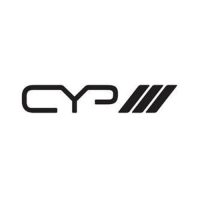42
45. Overscan
The Overscan pattern provides a quick way to determine how much
overscan, or clipping, is being caused by a display. It consists of 5
concentric rectangles moving in from the outer edge of the signal. They
are positioned at 0%, 2.5%, 5%, 7.5% and 10% of the screen size.
46. PLUGE (2 variations)
Full/Limited RGB
Range
The PLUGE pattern is used to perform the accurate and consistent
brightness and contrast configuration of a display. Typically you will want
to adjust the brightness control of the monitor so that the first bar is just
barely indistinguishable from the background black while the second
bar is still clearly visible. Next you should adjust the contrast so that all
four segments of the greyscale box are clearly visible and distinguishable.
There are 2 variations: Full RGB range (0–255) and Limited RGB range
(16–235).
47. Process 4:4:4
The Process 4:4:4 pattern is designed to help determine if a signal path
has been colour sub-sampled to 4:2:2 or 4:2:0 somewhere in the signal
path between the Test Generator and the display's panel. If the signal has
not been sub-sampled, the multi-coloured curved line will be composed
of 3 distinct coloured lines (red, blue and green) with no merging or loss
of colour/detail. The red/green/blue/white patterns on the left will also
present clean and distinct colour lines without breaks in the vertical

